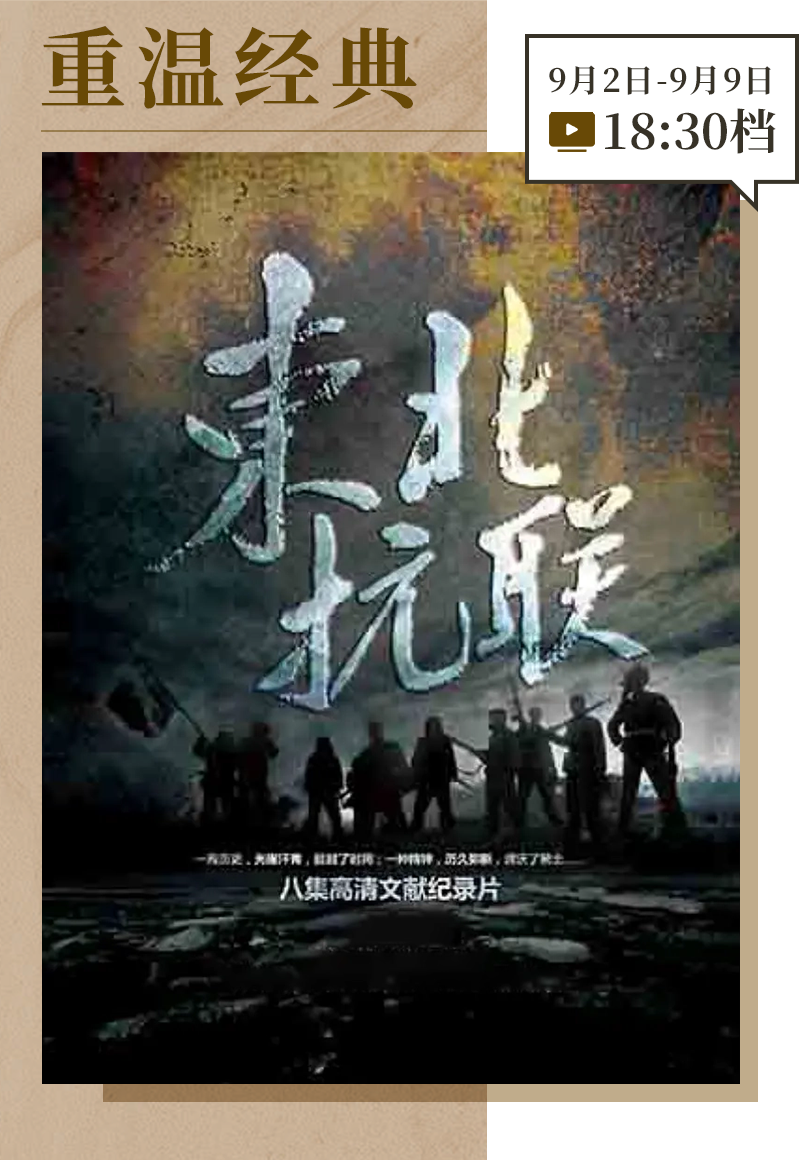
To commemorate the 80th anniversary of the victory of the Chinese People's War of Resistance Against Japanese Aggression and the World Anti-Fascist War, the "Revisit Classics" channel is broadcasting a series of classic films and TV series on the war of resistance. Among them, the documentary "Northeastern Anti-Japanese United Army" will be broadcast on the channel starting September 2nd.
The film takes the struggle of the Northeast Anti-Japanese United Army under the leadership of the Communist Party of China from 1931 to 1945 as its main line. With the help of documentary materials, historical images, interviews with people and scene reconstructions, it systematically sorts out the key time nodes during the War of Resistance Against Japanese Aggression, presents the touching deeds of heroic sons and daughters such as Yang Jingyu and Zhao Yiman from multiple angles, and deeply praises the great spirit and historical achievements of the Northeast Anti-Japanese United Army who were not afraid of powerful enemies and stuck to their beliefs.
Zhong Xiaojie, the director and screenwriter of "Northeast Anti-Japanese United Army", wrote an article after the film's premiere to review this unforgettable creative process. Through her vivid narration, she led the audience to remember the history of the War of Resistance and inherit the spirit of the Anti-Japanese United Army.
The original article, "Through the Lens: Filming the Days of the Northeast Anti-Japanese United Army," was published in China Television (Documentary) No. 10, 2014. (Author: Zhong Xiaojie, Director and Editor of the documentary "Northeast Anti-Japanese United Army")
Editors of this article: Zhao Cong and Mao Yi
Memories can sometimes be a beautiful experience; at other times, they can be a tearing, painful experience. During those unforgettable days filming "Northeastern Anti-Japanese United Army," we journeyed through the tunnel of time and space with heavy hearts each day. Everything we witnessed shook our souls again and again.
The past is too painful to recall. That period of time left behind a bloody pain.
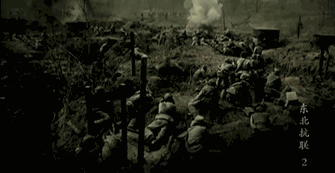
A clip from Northeast Anti-Japanese United Army
On September 18, 1931, the gunfire of the invaders shattered the tranquility of this ancient civilization. From then on, the people of Northeast China entered a dark night of blood and rain that lasted for 14 years, devastating the nation and destroying families. During this time, through our cameras, we faithfully recorded the memories of countless heroes' families and the stories of countless descendants of the Anti-Japanese United Army. Before our eyes, we witnessed the flashes of swords and the bloodshed, as well as the countless corpses. We wailed as we sang, and the bloodstains that stained the black earth have become an immortal monument on this fertile land.
The river of time still flows slowly. The days of filming "Northeast Anti-Japanese United Army" have been integrated into the river of time, along with our memories, rushing forward day and night.
I remember it was the end of 2011 when our large-scale documentary, "Changbai Mountain," became a national hit and caused a sensation. While everyone was still basking in the elation of success, the program team received the urgent task of filming the documentary "Northeastern Anti-Japanese United Army." Everyone was proud of the great responsibility they shouldered.
A new challenge began, and we plunged into preparations with utmost vigour. Where did we begin, after 14 years of such a long history? How could we recreate this arduous period for future generations? We began to realise the enormity of our mission.
I clearly remember that Mr. Li Maojie, the editor of "The Fourteen-Year Occupation History of Northeast China" and the expert of our film, said at an expert seminar in Heilongjiang, Jilin and Liaoning provinces: "We must use the spirit of the Anti-Japanese United Army to film the Northeast Anti-Japanese United Army." This shot in the arm became the spiritual pillar of our arduous filming work in the future, and it is also a classic saying that we encouraged each other along the way.
The large-scale documentary film, The Northeast Anti-Japanese United Army, started filming in the bitterly cold season of early 2013. It was an unusual winter, exceptionally cold.
In order to truly reproduce the hard life of the Northeast Anti-Japanese Allied Forces soldiers and officers in winter and the cruelty of the anti-Japanese struggle, the focus of our filming work shifted to the Changbai Mountain area, where the Anti-Japanese Allied Forces soldiers lived and fought.
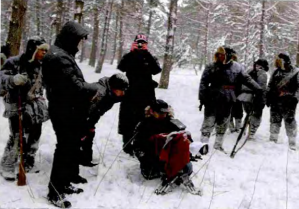
Work photos of the documentary "Northeast Anti-Japanese United Army"
During the coldest days of winter in Northeast China, our crew journeyed majestically into the deep, coldest mountains and forests of Northeast China. The wheels squeaked through the thick snow, and the breath outside turned to frost. This was a true forest of snow. The snow that year was exceptionally heavy and frequent. Deep in the dense forest, the snow was waist-deep. Broken branches and collapsed houses were everywhere. Especially on dark, windy nights, the crackling of frozen trees and the howling of animals added a sense of desolation and terror to the bitterly cold winter nights. During sleepless nights, everyone imagined how the Anti-Japanese Allied Forces fighters, short of clothing and ammunition, fought the enemy on a diet of grass roots and tree bark. How did they push the limits of life in the freezing cold?
The film crew set up camp in Manjiang Village, Fusong County, Jilin Province. Every villager, young and old, became our actors, uniformly dressed in costumes from the Anti-Japanese War era. Even in the small mountain village today, the sound of artillery fire and the constant whiff of smoke fills the air. Entering the village feels like stepping back into the past. What's unforgettable is the warmth and sincerity of the villagers, who both act and serve the film crew. The town secretary, a delicate woman named Du, said she had never seen such a scene before. Initially, she was full of enthusiasm, but after more than ten days, she had become a dusty, dusty female Anti-Japanese Allied Forces fighter. Afterwards, she told us with deep emotion that this was the most meaningful experience of her life.
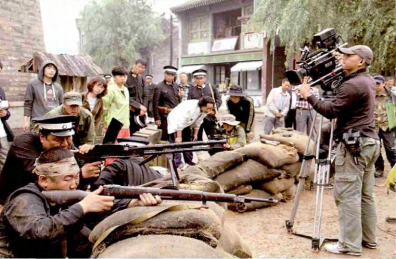
Work photos of the documentary "Northeast Anti-Japanese United Army"
If you're on vacation, the north is a beautiful wonderland at this time. Snowy days stretch on, thick white snow sways on tree trunks and branches, and even the air is sweet. But we lack any sense of romance. Standing outside for even a moment will freeze you to the bone, and everyone's busy from dawn to sunset. The ginger water the locals brew for us is scalding hot when we leave the house, but once we get it outside, it's already warm when we pour it into bowls.
Manjiang Village is a well-preserved old village in Jilin Province. Most of the houses are from 70 or 80 years ago, some over a century old. Living conditions were difficult. Almost all the crew members grew up in the city and had never slept on a kang (a heated kang). At night, the covers were still warm upon entering, but in the morning, their foreheads were covered in frost. Many people caught colds, but they gritted their teeth and endured them in silence. Everyone kept repeating to themselves the words of Professor Li Maojie: "Film the Northeast Anti-Japanese United Army with the spirit of the Anti-Japanese United Army."
Producer Li Xiaobing bore the greatest pressure. This fierce man toiled with the cameramen during the day, making it hard to tell who was him. At night, he would research the next day's shooting schedule, discussing the script late into the night, never getting a good night's sleep. He had extremely high standards for filming, demanding both quality and precision. After a few days, his mouth was covered in blisters. When he arrived, he was a vibrant and handsome man. Just over two weeks later, he had aged several years, becoming like a local villager. When the crew left, the locals were reluctant to part with him.
Manjiang Village was really lively for a while during this cold winter.
To film existing ruins and seek out surviving insiders and descendants of the Anti-Japanese United Army, cameraman Song Yanwei, my assistant Wang Yining, and I drove to China's northern borderlands, trudging through thick ice and snow as we retraced the Anti-Japanese United Army's route. Over 23 days, during the coldest days of winter in Northeast China, we visited 22 cities and counties. In nearly every location, we would interview in the morning and then drive to the next filming location in the afternoon, covering 500 to 600 kilometers a day.

A clip from Northeast Anti-Japanese United Army
In Yichun, we drove to the ruins of the radio school founded by Li Zhaolin and Zhao Shangzhi. Led by a local guide, our off-road vehicle entered a sparsely populated primeval forest. The snow here was as white as cotton wool, and the sunlight filtering through the treetops onto the snow was blinding. The snow had already buried the stone stele standing at the site, towering taller than a person. Unexperienced and without any snow removal tools, we had to get out of the car and sit on the snowdrifts, scraping away the snow with our hands and branches, from the top of the stele to the ground. After several hours, Wang Yining's fingers were frozen and bent, unable to stretch them out. He worried he'd break them if he exerted too much force. Song Yanwei, the bearded cameraman, emerged from the snowdrifts with his hair and beard covered in frost, transforming him into a "Santa Claus." Touching our faces felt like a mask, a hard shell, impervious to all sensation. Nature's coldness tested our endurance.
In the Lesser Khingan Mountains, amidst the virgin forests of mixed trees, winter birch trees vividly punctuate the dormant trees, creating a tranquil and beautiful scene. Standing on the frozen northern landscape, we have no time to admire the dense forests bathed in the afterglow of the setting sun. In the bitter cold, the scene often brings back memories, and we imagine the Anti-Japanese Allied Forces fighters of those days. How did they endure each day? How did they cross mountains and ridges to confront the enemy?

A clip from Northeast Anti-Japanese United Army
To save time, we set out from Jiayin County, on the Sino-Russian border in eastern Heilongjiang, aiming to reach Manzhouli, on the Sino-Russian border in western Heilongjiang, by nightfall. We'd already been filming for over 20 days, and the station was in post-production, waiting for footage. Everyone was anxious. Song Yanwei was both cameraman and driver, and with the thousand-mile journey, I worried he wouldn't be able to hold on. When we set out that morning, I discussed stopping for the night, and he insisted it was absolutely fine.
The three of us set off on the thousand-mile snow-covered route from Jiayin County to Manzhouli. At first, we were excited and had lots to talk about. But before we were halfway there, all we could hear in the car was the constant stomping of feet. The colder it got, the colder it got. We initially thought the heater was broken, but we stopped to check. It turned out to be fine. We had already entered the depths of the cold.
Our car sped across the vast, snow-covered grasslands. The snow stretched out, leaving no visible signs of progress. If I hadn't checked my watch, I wouldn't have noticed our speed. On that road, our car was like a wild horse running free. Thinking about it today, I'm really scared.
After passing Arong Banner in Inner Mongolia Autonomous Region, the highway disappeared. The road stretched bare, less than a meter wide, asphalt stretched forward. Our wheels practically crushed the snow on either side of the asphalt as we drove forward. On the winter grassland, our car was a tiny, dynamic dot against the vast expanse of snow. The wind was strong, and the snow whistled across the road, following the wind's direction. The scene was so majestic and orderly that I quickly asked Wang Yining to capture it. It turns out the grassland in winter has a whole other kind of grandeur.
More than ten hours later, we drove into Manzhouli. The climate here was unusually dry and cold, with the outside temperature nearing -40 degrees Celsius. When our cameraman, Song Yanwei, got out of the car, his shoes immediately stuck to the ground. We joked that Manzhouli was so welcoming, they were trying to keep us here. To save money, we drove to several hotels in each destination, searching for a warm and affordable place to stay.
The nights in Manzhouli lacked the bustle and bustle typical of border towns. The cold chilled everyone to bed early. Only when we checked into the hotel did we feel a glimmer of warmth, a moment of bliss. But I was surprised to find it difficult to pull my feet out of my shoes. Both feet were swollen from the cold. As the night wore on, the pain was excruciating, making it hard to sleep. I tossed and turned in bed. It wasn't just my feet that hurt; the residual warmth in the room was dwindling, leaving me feeling like a cold draft on my face. I was already sleeping fully clothed, so getting up, putting on my coat, and returning to bed didn't solve the problem. It was past two in the morning when I checked into the watch. I imagined the Anti-Japanese Allied Forces fighters, sleeping in the woods and snowdrifts in winter. I was already enjoying life, but the more I thought about it, the colder I felt. Since I needed to be alert to face my interviewees at dawn, I had to pick up the phone for help, which I had put down several times. After the front desk phone rang a dozen times, a deep bass voice reached the other end. I told him I was too cold to sleep and asked if he could lend me a quilt. He enthusiastically said he'd send it right away. I covered myself with the quilt the waiter brought, slipped back into bed, and drifted off to sleep. This beautiful, freezing winter in Manchuria gave me an unforgettable night. We finally experienced the harsh cold weather endured by the Anti-Japanese Allied Forces fighters.
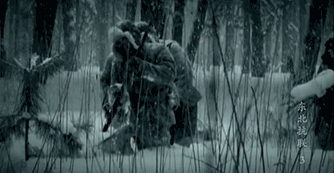
A clip from Northeast Anti-Japanese United Army
In the autumn and winter of 1940, the Northeast Anti-Japanese United Army suffered a serious setback. According to the mutual support and cooperation agreement reached between the Anti-Japanese United Army and the Soviet Union, the Soviet side promised and allowed the Anti-Japanese United Army troops to move to the Soviet Union under difficult circumstances.
To document the lives and battles of the 88th Brigade of the Northeast Anti-Japanese United Army in the Soviet Union, our crew decided to travel to the Russian Far East. On May 6, 2013, 16 descendants of the Northeast Anti-Japanese United Army joined us in Dongning County, Mudanjiang City, Heilongjiang Province, on China's northern border. From there, they journeyed across the border to the Russian Far East, retracing the footsteps of their ancestors' lives and battles. Thus began a journey of remembrance in the Russian Far East.
After more than half a century of waiting, the wish of descendants of the Anti-Japanese United Army has finally been fulfilled. The group includes Zhou Baozhong's daughter Zhou Wei, Li Zhaolin's daughter Zhang Zhuoya, Chai Shirong's granddaughter Chai Eli, Li Hongguang's daughter Li Jianying, and Li Fanwu's son Li Duoli. All were born in the Soviet Union and spent their childhoods in Soviet nurseries without their parents. Their greatest wish in life is to visit their birthplaces, the places where their fathers fought so fiercely.

A clip from Northeast Anti-Japanese United Army
After several twists and turns, the train drew closer to its destination. Khabarovsk was no longer just a city symbol in their hearts; the significance of this land lay in the pain of history, a memory that no Chinese person could erase.
During the War of Resistance Against Japanese Aggression, in order to facilitate unified leadership and management, two temporary garrisons were established in the north and south of the Soviet Far East. For the sake of convenience, the temporary garrisons were called "camps."
The Northern Camp, or Northern Garrison, was located in the village of Fe-Yask on the southern bank of the Amur River, 75 kilometers northeast of Khabarovsk (present-day Khabarovsk), within the Soviet Union. There were a few houses, but the majority of the area was tents. Because of its northeastern location, it was named the Northern Camp to distinguish it from another camp near Shuangchengzi, south of Khabarovsk. At the time, the area was surrounded by rolling hills and dense forests, nestled beside rivers and mountains, offering swimming in the summer and skiing in the winter, making it a perfect place for military training.
After an overnight train ride, we arrived in the village of Feyyask in Khabarovsk at noon. Spring had arrived late this year, and it was already May, so the trees here were just beginning to bud.
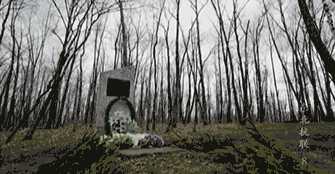
A clip from Northeast Anti-Japanese United Army
We brought the flowers we'd bought along the way to the birch forest outside the village. Within this boundless, elegant, and tranquil birch forest, rest the soldiers of the 88th Brigade of the Soviet Red Banner Army, members of the Far Eastern Combined Forces, and members of the Chinese Anti-Japanese Allied Forces who lived and fought in Fe-Yask from 1941 to 1945. Their blood was shed on this land to safeguard world peace.
On the silent stone tablets, we cannot see the names of the deceased, nor can we imagine their faces. Only this land and birch forest bear witness to the passage of time, remember their achievements, and quietly accompany their spirits.
As we laid flowers on the tombstone and sprinkled the Erguotou we had brought from Beijing before the martyr's spirit, General Li Zhaolin's daughter, Zhang Zhuoya, knelt on the ground and burst into tears. Her cries echoed through the birch forest and carried far away. Her condolences for her loved ones, her remembrance of the countless heroes who rest here, were drowned out by her cries.
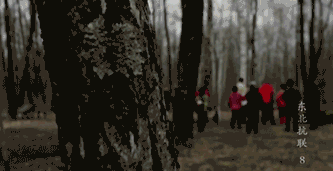
A clip from Northeast Anti-Japanese United Army
When General Chai Shirong's great-grandson, Chai Long, and Wang Xiaoming's son, Wang Min, helped Zhang Zhuoya to her feet, these two strong men, now in their fifties, couldn't stop crying. That afternoon, in a foreign land, in this birch forest that bears witness to the vicissitudes of time, tears streamed down our faces.
Heroes of the Anti-Japanese Allied Forces sleeping here, you have surely heard the heartfelt words from each of us, and seen the greetings from your loved ones across the land. Perhaps your loved ones still cannot find you, but we are all your loved ones. Without your sacrifice, we would not have the happy life we have today, and the people will never forget you. To the west of Fe-Yask Village lies the tranquil Amur River, flowing from the Far East to China's Heilongjiang River. It was nearly dusk when we arrived at the riverbank. In the past, Anti-Japanese Allied Forces fighters would pass through here to transport weapons. Today, the Amur River is as smooth as a mirror, the pebbles beneath the water clearly visible. I wonder how many years it has lain here, witnessing the passage of time.
Before leaving, Li Zhaolin's granddaughter Li Haiying told me that an important gift she brought with her was a harmonica. She wanted to play a song "Evening on the outskirts of Moscow" for the deceased heroes by the Amur River, and tell the heroes sleeping here that we are here to see you.
Li Haiying is not only a skilled oil painter, but also an expert harmonica player. The melodious harmonica notes echo, mournful and melancholic. The mountains are silent, the earth is speechless, and the Amur River, under the setting sun, listens quietly. In the distance, a small boat paddles towards the sunset, toward the end of the water. Beyond the water lies China, the homeland of heroes.
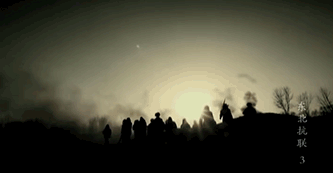
A clip from Northeast Anti-Japanese United Army
Filming for the documentary "Northeastern Anti-Japanese United Army" has concluded. Rest in peace, my souls, those who sleep in this land! If you could know, when your souls return home and see the new era you forged with your blood, you would smile in your grave. History will remember you, and the people will forever cherish your memory.
"Northeast Anti-Japanese United Army" will make people all over the world hate war more and love peace more.


